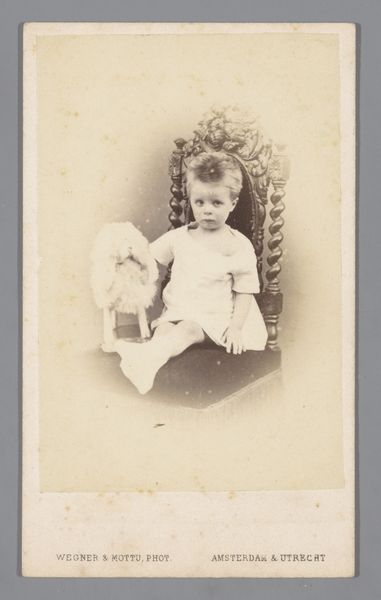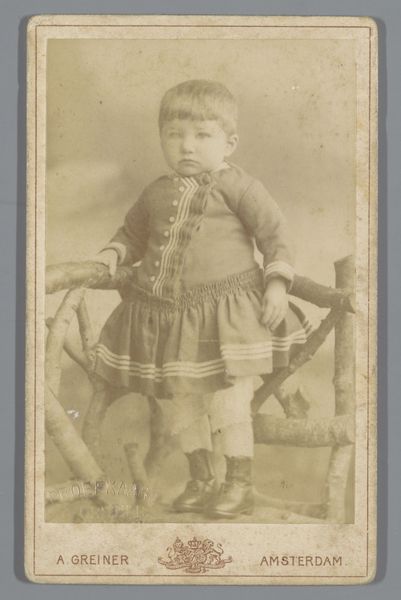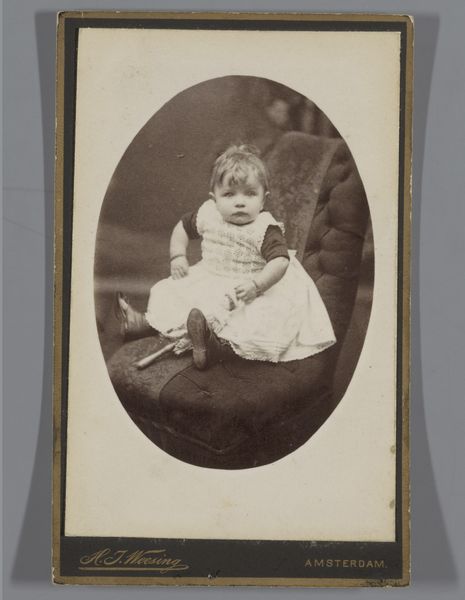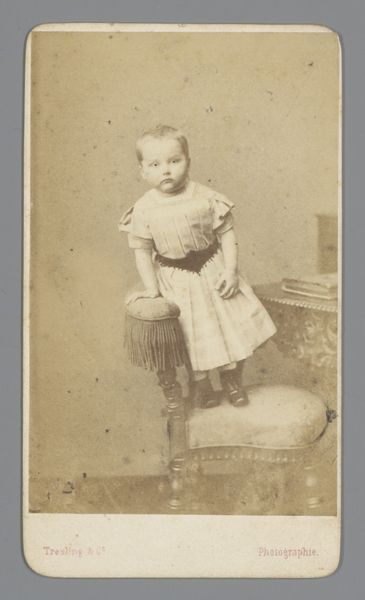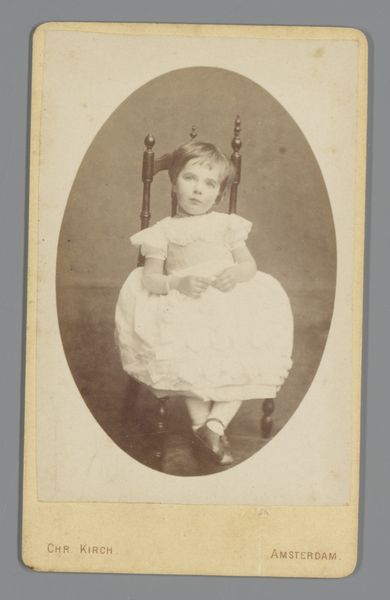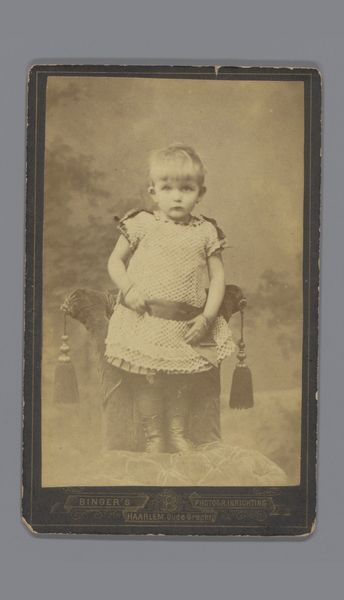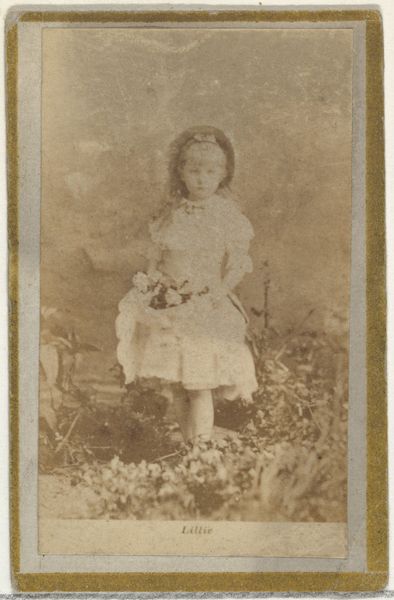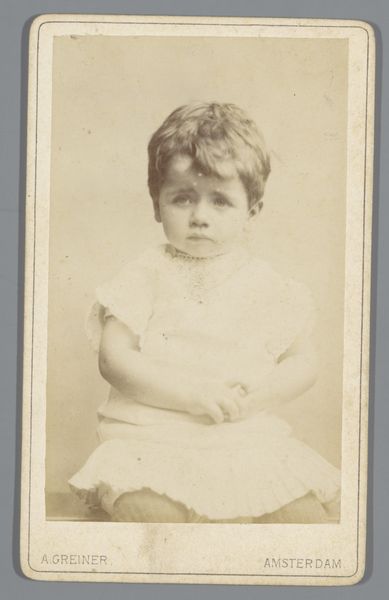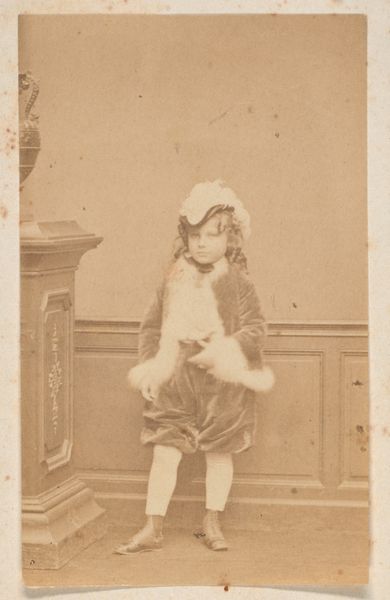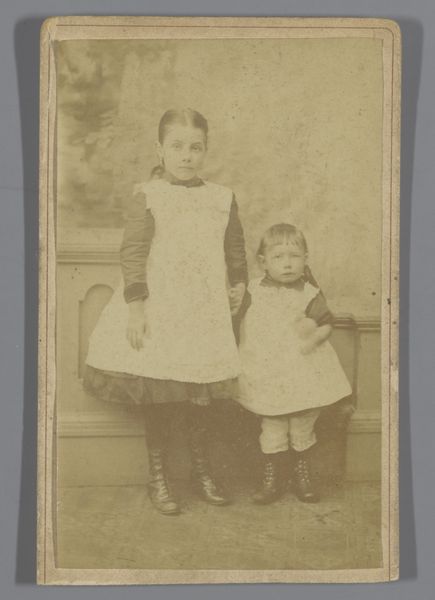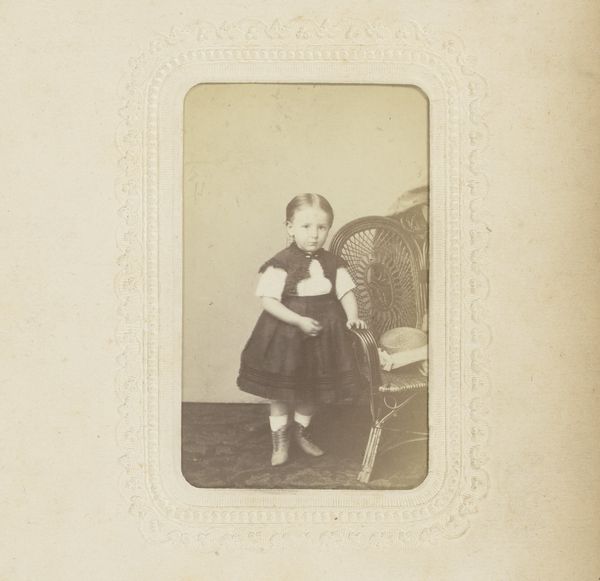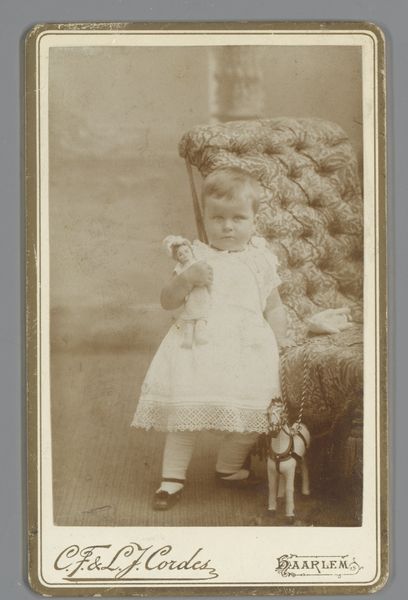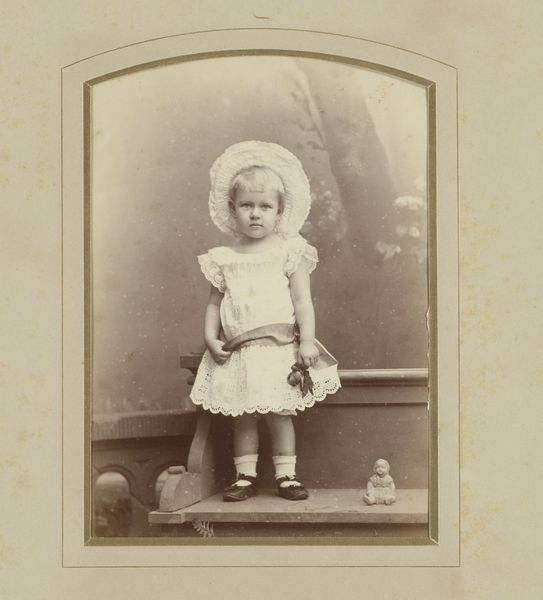
photography
#
portrait
#
still-life-photography
#
dog
#
photography
#
coloured pencil
#
genre-painting
#
watercolor
Dimensions: height 136 mm, width 100 mm
Copyright: Rijks Museum: Open Domain
Editor: So, here we have "Portret van een onbekend meisje met een hond" by Hermanus Jodocus Weesing, likely from the late 1800s. It's a sepia-toned photograph. The formality and gravity are quite striking, and how the figures interact creates a definite angular form. What compositional elements stand out to you? Curator: Immediately, I am struck by the spatial relationship. The foreground is dominated by the recumbent canine form, a definite horizontal, its implied mass anchoring the image. Behind, we find a perpendicular figure, that of the girl, and both are pressed to the picture plane. This creates a flattening effect. Editor: I noticed the texture. How does the smooth background contrast with the rougher, more detailed depiction of the girl and her dog? Curator: Indeed, that contrasting of textures introduces dynamism to what might otherwise be a static composition. Look at how the light models form in both bodies. They provide counter-weighted tonal balance which provides unity. Notice how this use of light describes material, implying the sleek coat of the dog against the frills of her dress. Do you find any disruptions? Editor: I wonder if the placement of the girl and dog at opposite corners is meaningful? Curator: Potentially. Certainly, it divides the space into two distinct fields, balancing one form with the other in relation to implied gravitational pressure. Consider too the focal competition between the animal and her human. The geometry of the subject becomes an interplay that complicates simplistic ideas. It's not just about capturing their likeness; it's the interaction of form, light, and implied volume that elevates the piece. Editor: So focusing on these aspects helps reveal greater depths of composition beyond the historical depiction of its subjects? Curator: Precisely! Understanding how line, light, and form collaborate allow us to grasp how art functions to describe being, but not always directly! The image reveals the power of art in the ways in which these functions interrelate, a lesson for us all.
Comments
No comments
Be the first to comment and join the conversation on the ultimate creative platform.
